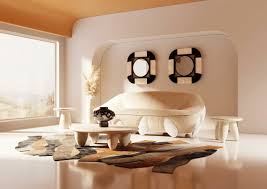The Evolution of Architectural Design in Islamabad
Introduction:
Islamabad, the capital of Pakistan, has witnessed a remarkable evolution in its architectural landscape. Initially conceived as a planned city in the 1960s, Islamabad’s design was influenced by modernist principles and the vision of Greek architect Constantinos Apostolou Doxiadis. As time progressed, architects in Islamabad began to blend contemporary design with traditional Pakistani elements, creating a unique fusion that represents the city’s growing identity. This blend is evident in government buildings, residential areas, and public spaces.
The transformation is driven by a new generation of architects in Islamabad, who prioritize sustainability and functionality while maintaining the city’s aesthetic harmony. The contemporary architectural scene in Islamabad emphasizes clean lines, open spaces, and an abundance of natural light. At the same time, these architects draw inspiration from Islamic art and traditional craftsmanship, creating designs that resonate with the cultural heritage of the region. The integration of these elements has made Islamabad a showcase of innovative architectural practices that respect the past while looking to the future.
Innovations in Interior Design in Islamabad:
The interior design industry in Islamabad has also experienced a significant shift. With the rise of a more design-conscious population, there is a greater demand for interior spaces that reflect individuality and style. An interior designer in Islamabad is now expected to create environments that are both functional and aesthetically pleasing. This shift is evident in residential homes, corporate offices, and public venues where interior designers experiment with various themes, color schemes, and materials to craft unique spaces.
Modern interior designer in Islamabad are increasingly incorporating sustainable practices into their work. They use eco-friendly materials, promote energy efficiency, and focus on creating environments that promote well-being. This trend aligns with the broader global movement toward sustainability in design. Furthermore, an interior designer in Islamabad often collaborates with architects to ensure a cohesive approach to building design and interior aesthetics. This collaboration ensures that the internal and external aspects of a structure harmonize to create a unified visual experience.
Cultural Influences on Design in Islamabad:
Islamabad’s architectural and interior design scene is heavily influenced by the rich cultural tapestry of Pakistan. Architects in Islamabad are inspired by the intricate patterns and motifs found in traditional Islamic architecture. This influence is evident in the use of geometric designs, calligraphy, and elaborate tilework. These cultural elements are often incorporated into modern structures to create a sense of continuity with the past, providing a visual link between contemporary design and traditional craftsmanship.
Similarly, interior designer in Islamabad draw inspiration from local art, textiles, and historical references to create spaces that feel familiar yet innovative. This approach not only honors the cultural heritage of Pakistan but also adds a unique character to the interior spaces. The result is an environment that is both modern and deeply rooted in tradition. This cultural infusion extends to furniture design, decorative elements, and even lighting, creating a harmonious blend that appeals to both local and international tastes.
The Role of Technology in Islamabad Architectural Scene:
Technology plays a significant role in shaping the architectural and interior design landscape in Islamabad. Architects in Islamabad use advanced software and design tools to create precise plans and 3D models, allowing for greater accuracy and creativity. These technological advancements enable architects to experiment with complex structures and innovative design concepts, pushing the boundaries of what is possible in the city’s architectural scene.
Similarly, technology has revolutionized the work of interior designer in Islamabad. They use virtual reality and augmented reality to visualize and experiment with different design concepts before implementing them. This technology allows interior designers to provide clients with a realistic preview of their space, leading to more informed decisions and a more streamlined design process. Furthermore, smart home technology is becoming increasingly popular, with interior designers integrating these systems to create more efficient and user-friendly environments. This technological embrace has contributed to Islamabad’s reputation as a city where modernity and tradition coexist harmoniously.
Sustainability and Green Design in Islamabad:
Sustainability has become a central focus for architects and interior designers in Islamabad. As concerns about climate change and environmental impact grow, the design community in Islamabad is taking proactive steps to reduce the carbon footprint of buildings and create more sustainable living and working environments. Architects in Islamabad are adopting green building practices, such as using energy-efficient materials, incorporating renewable energy sources, and designing structures that maximize natural light and ventilation.
Interior designer in Islamabad also play a crucial role in promoting sustainability. They choose eco-friendly materials, such as reclaimed wood and recycled metals, and prioritize energy-efficient lighting and appliances. The use of sustainable practices in interior design not only reduces environmental impact but also creates healthier and more comfortable living spaces. This emphasis on sustainability aligns with the broader global trend toward eco-friendly design and demonstrates Islamabad’s commitment to being a forward-thinking city.
Overall, the evolution of architectural and interior design in Islamabad reflects a city in transition. Architects and interior designers in Islamabad are embracing new technologies and sustainable practices while maintaining a strong connection to cultural heritage. This dynamic approach ensures that Islamabad continues to grow as a city that values innovation, tradition, and sustainability.




